Disclosure: This post contains affiliate links that I may earn a small commission from if you purchase something through them. This comes at no extra cost to you!
One of northern Thailand’s best kept secrets, Wat Chalermprakiat Phrachomklao Rachanusorn, or more simply “The Floating Pagodas”, are much more than just your average series of pagodas. This is an off-the-beaten path adventure to somewhere mesmerising, mysterious and truly magical.
Located 150km from Chiang Mai or 70km from Lampang, the long journey to The Floating Pagodas is part of the fun and makes the feeling so much sweeter when you get to the top! Make an epic road trip out of this from either city and I guarantee you will not be disappointed.
Now let me explain how you can admire Wat Chalermprakiat with your own eyes, including lots of photos from my trip!
Table of Contents...
Toggle
Useful information for Thailand
- Country: Thailand
- Language: Thai
- Currency: Thai baht: £1/$1 = 42/37 THB
- Visa info: As of October 1st 2022, many countries can enter Thailand for free with a 45 day visa on arrival. If your country isn’t included you can apply for a 30 or 60 day tourist visa before arriving. After that you can extend for an additional 30 days at immigration in Chiang Mai or Bangkok for around $40. You can onlt do this once before having to physically leave the country.
- SIM cards: There are a few SIM card options that are good in northern Thailand, but the best is DTAC. They have solid reception even in remote areas and offer a great package of unlimited internet at a fast speed of 15mbps for only 200THB (£4.70) per month. It can be topped up at any 7/11 store. Alternatively, buy an eSIM for Thailand here.
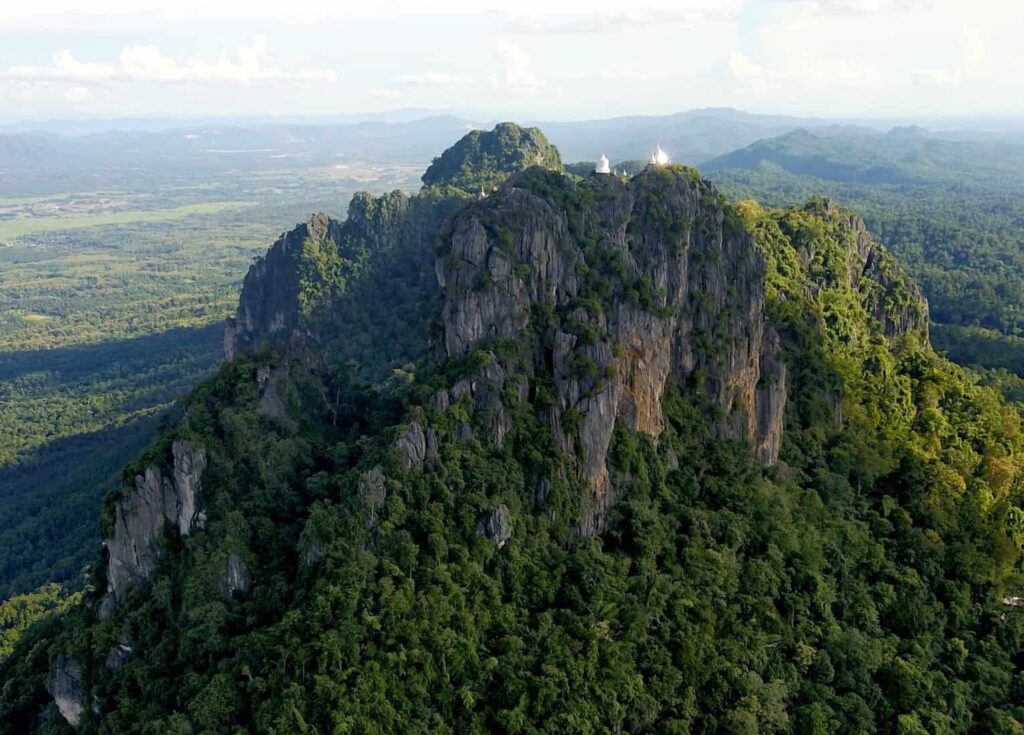
Where is it
Wat Chalermprakiat is located in the north of Thailand in the Lampang Province, about 150km east of Chiang Mai and 70km north of Lampang.
Check it out on the interactive map below.
How to get to the Floating Pagodas
There is a reason Wat Chalermprakiat is not well known, and that’s because it is in a very remote location.
There are no public transport links to the Floating Pagodas from Chiang Mai or Lampang, so you’ll need to arrange your own
transport – aka adventure time! From Chiang Mai it would take about 2 hours to get here by road, with a bike costing about 200 THB per day.
I drove a motorbike from Lampang which I luckily managed to get through a friend’s landlord. The journey takes around 1hr 15 minutes including a couple of stops for coffee and photos surrounded by beautiful rice paddies and mountains.
From Chiang Mai you can rent a car or motorbike or potentially inquire about a tour through your accommodation, although none are offered online. Alternatively, catch a $1 train to Lampang and start the journey from there. Unfortunately, it’s extremely difficult to find somewhere to rent a motorbike in Lampang, if not impossible. If you’re planning to visit the pagodas during your stay in Lampang and want to self-drive, it would be best to find accommodation that offer bike rental in advance.
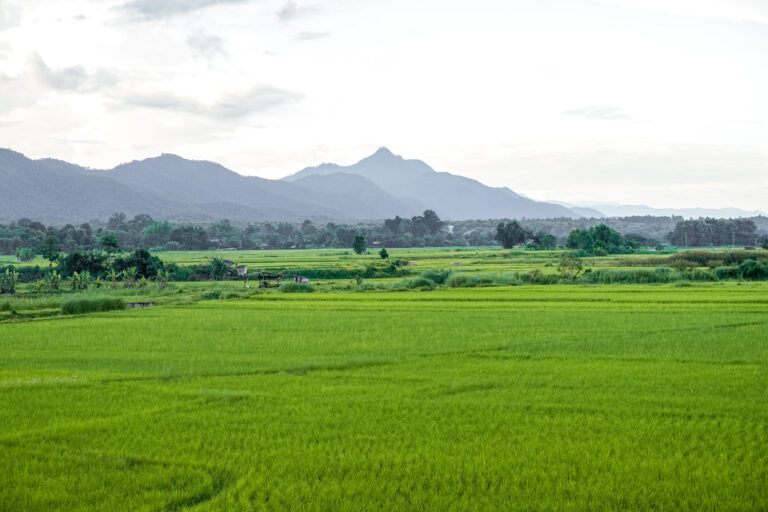
When to go
The mountain is open from 7:30am – 5pm. At 5pm the shuttle service to the half way point will stop and you’ll have a hell of a hike ahead of you to get back if you’re late!
I’d recommend visiting in the rainy or cool seasons because the forest up the mountain and surrounding areas will be beautifully green and lush. Anytime between June and December would be perfect.
Outside of these months it will still be an amazing adventure, but it’ll be a lot hotter. Due to it’s remote location, it’ll never get overcrowded here though.
Thailand’s seasons:
- Wet season (May – Oct)
- Cool season (Nov – Feb)
- Hot season (Mar – May)
Where to stay
Expected costs
As of August 2022, a visit to the top of the mountain now costs 100 THB which includes a songthaew truck ride up and down the steep road to the half way point.
At the car park there are a few options for food and drinks as well, which are relatively cheap. Make sure you have a few extra baht with you for some cold water before you get going – you’re gonna need it!
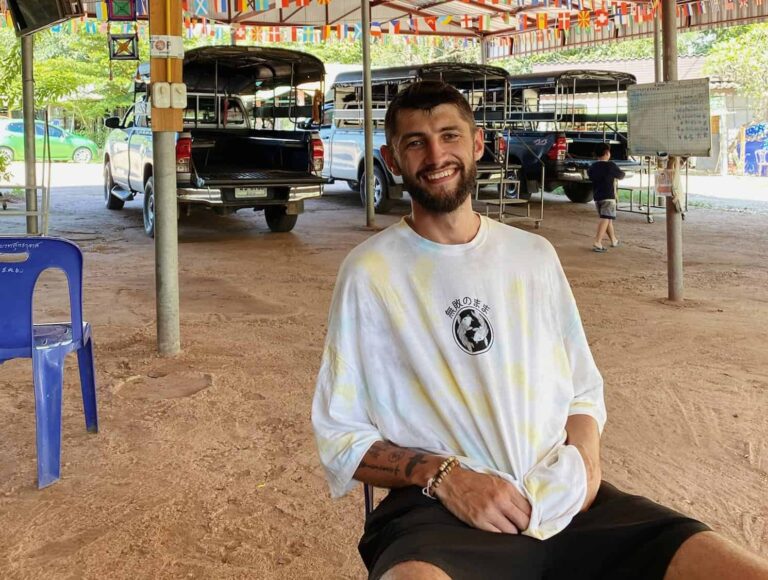
Thinking of visiting Southeast Asia soon? Don’t miss these essential guides to help planning your trip:
What to expect at the Floating Pagodas
When you arrive at the car park you’ll park up and pay the 100 THB for entrance to the mountain and an inclusive songthaew (truck) which will take you to the half way point. You’re not allowed to drive your own bike up, and if you do try you’ll definitely regret it. It’s a steep, slippery road that even the truck struggled on at times. Brace yourself for a short but bumpy ride!
At the drop-off point there are some food and drink stalls, as well as toilets, but that’s about it. Stock up on water if you haven’t already and get ready to take on the gruelling steps through the forest to the summit.
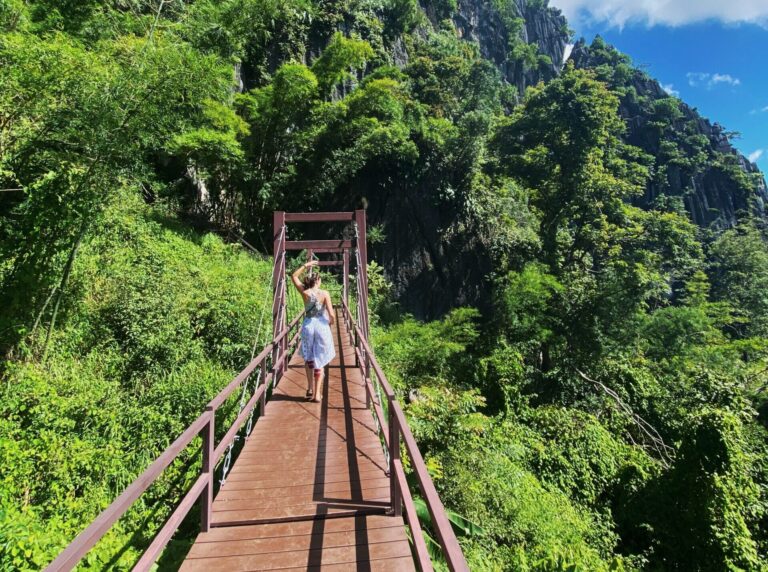
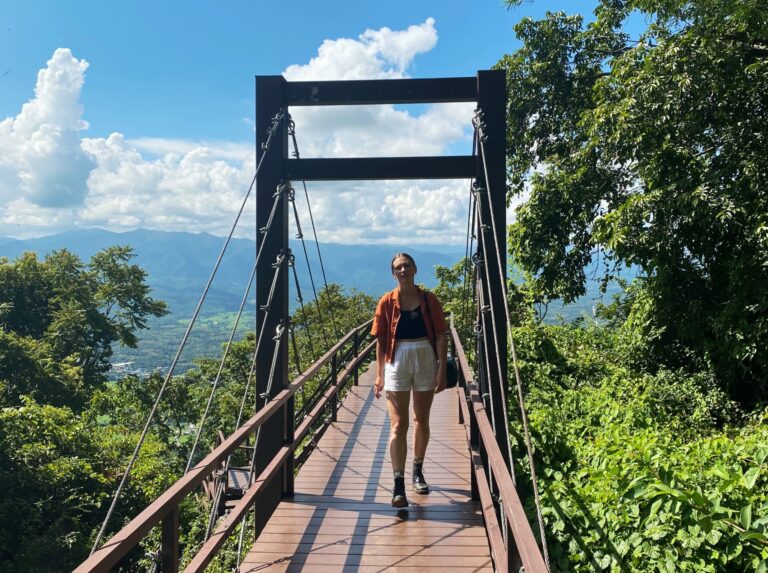
The trail consists of metal and wooden staircases scaling 800 meters up the side of the mountain which should take around 20 minutes.
The forest is extremely humid at any time of year so allow some extra time to stop and take some deep breaths. There are a few fantastic viewpoints on the way up which will probably tempt you to stop and take pictures anyway!
Arriving at the top there is a small pavilion-type structure that marks the true summit.
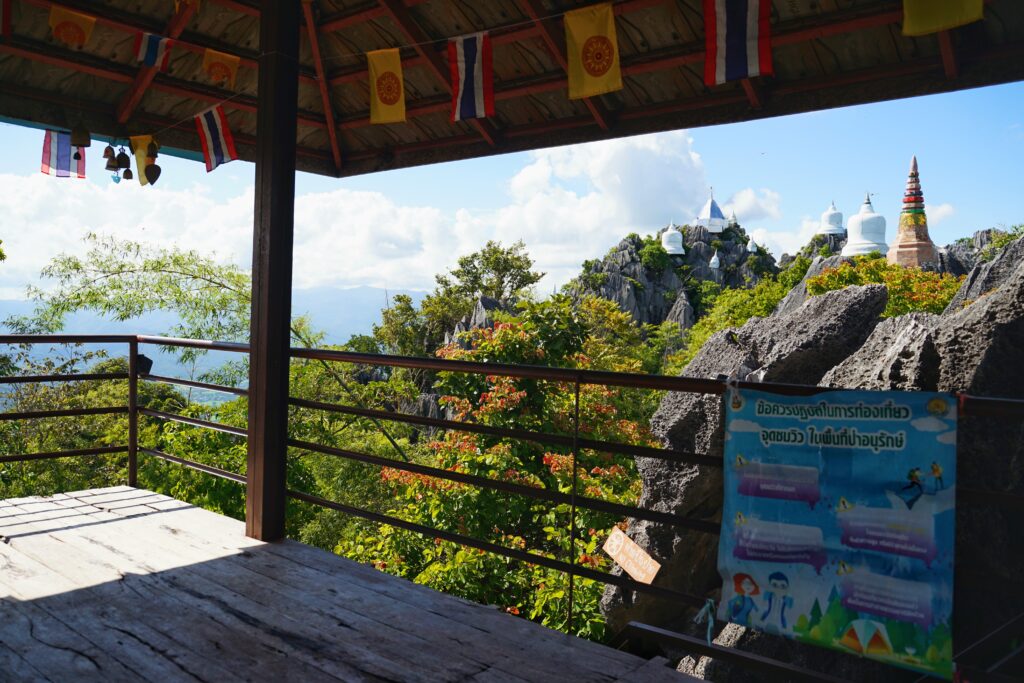
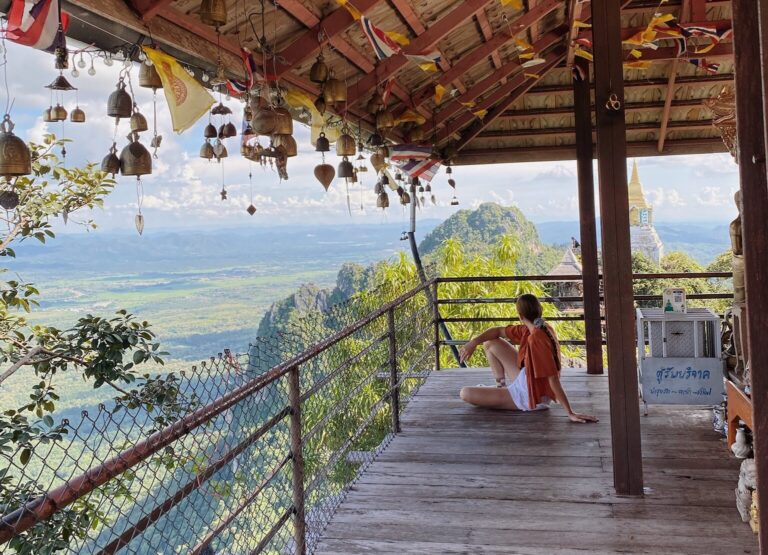
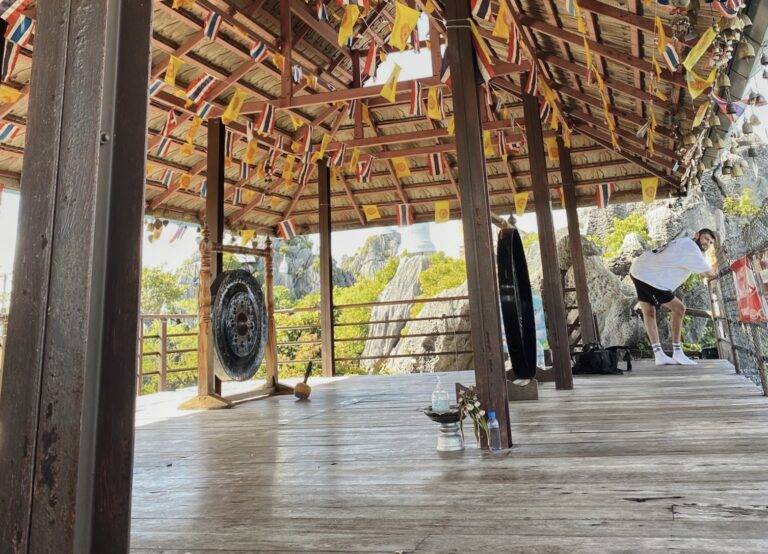
This is the best place to view the Floating Pagodas from and inside the terrace there is a Buddhist shrine.
It’s an incredibly serene place where the ridiculously beauty speaks for itself.
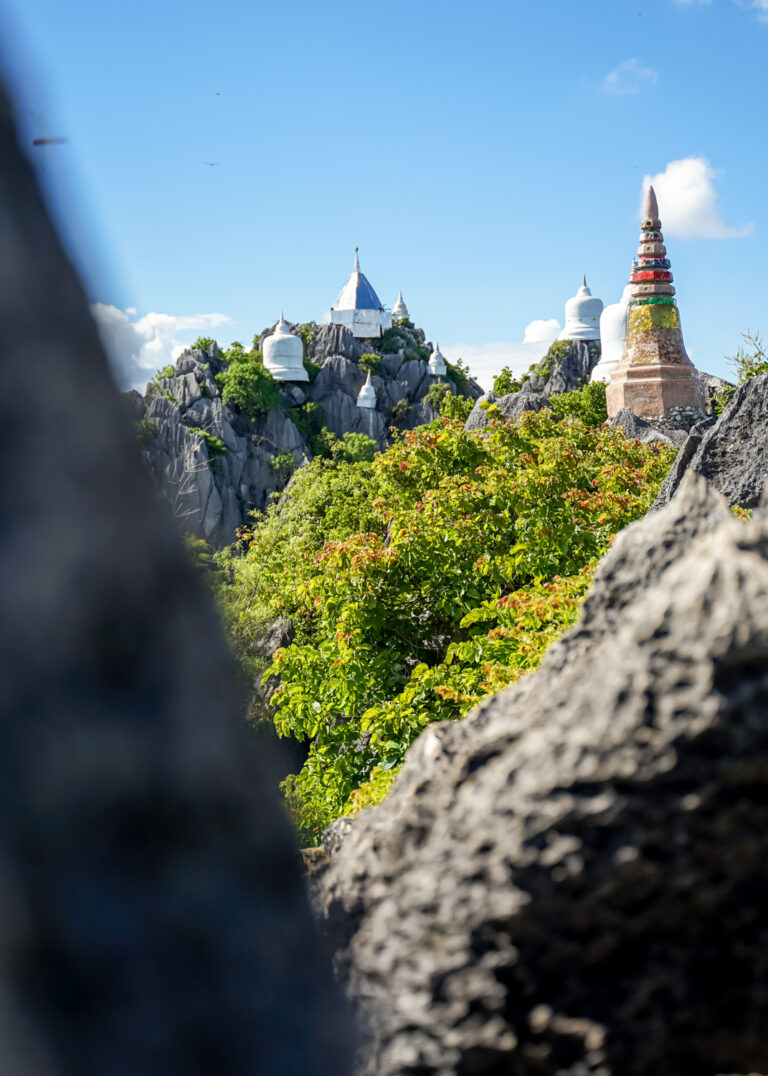
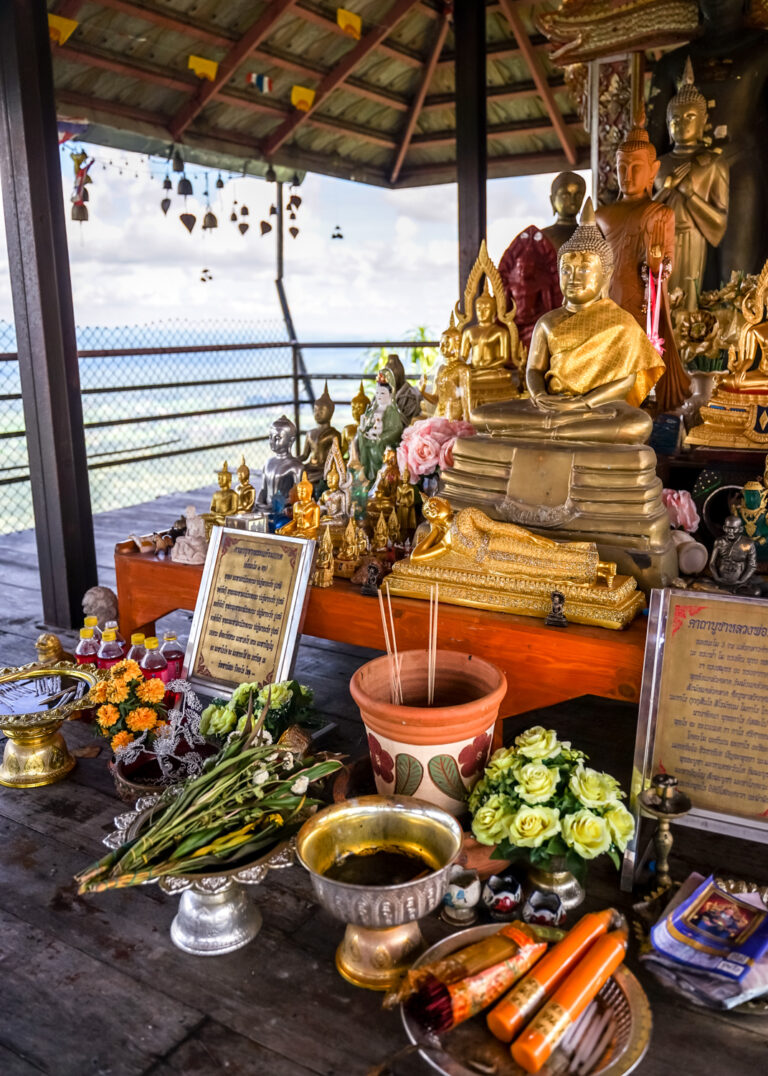
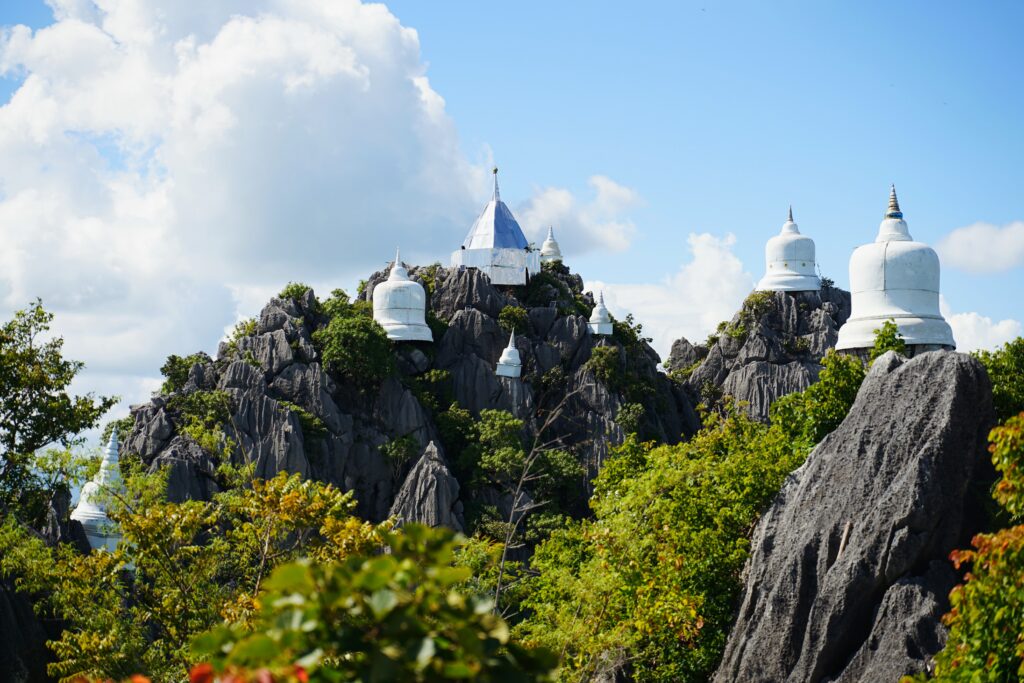
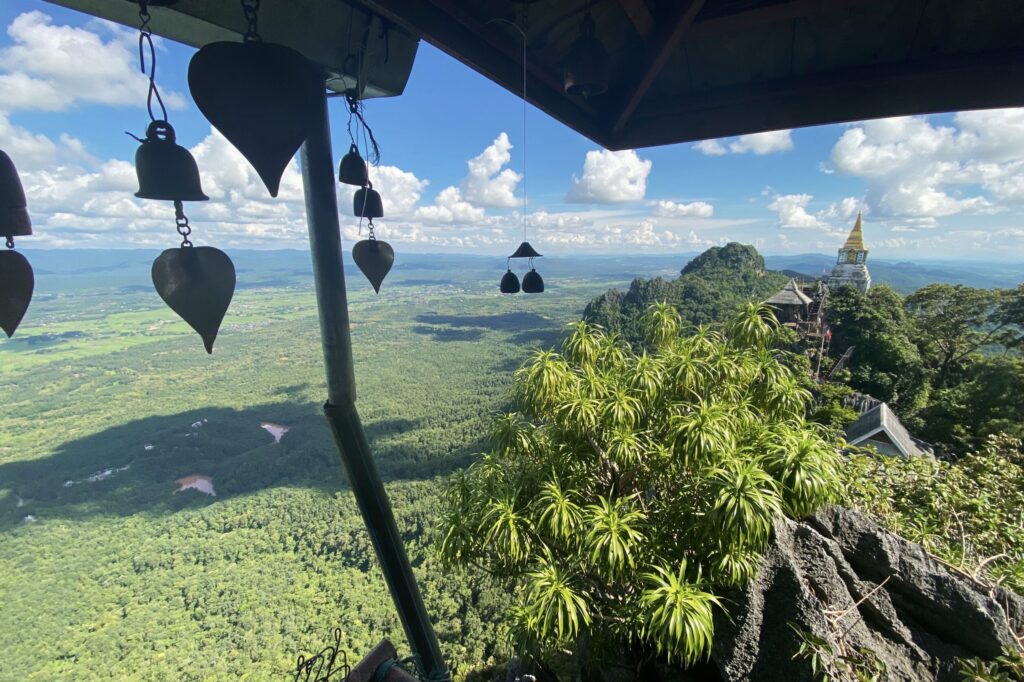
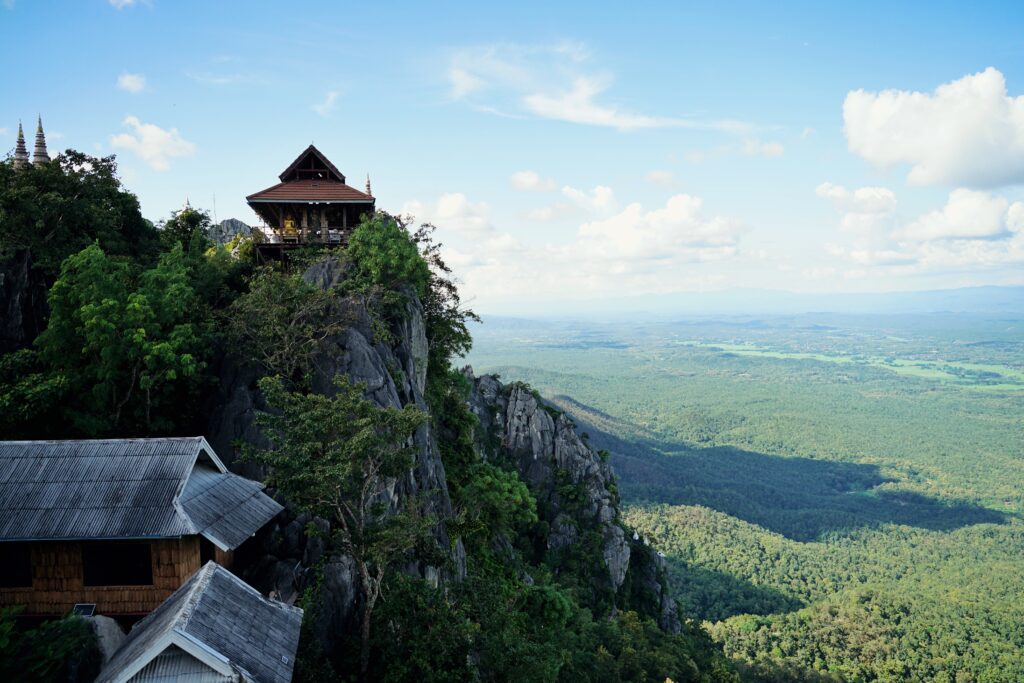
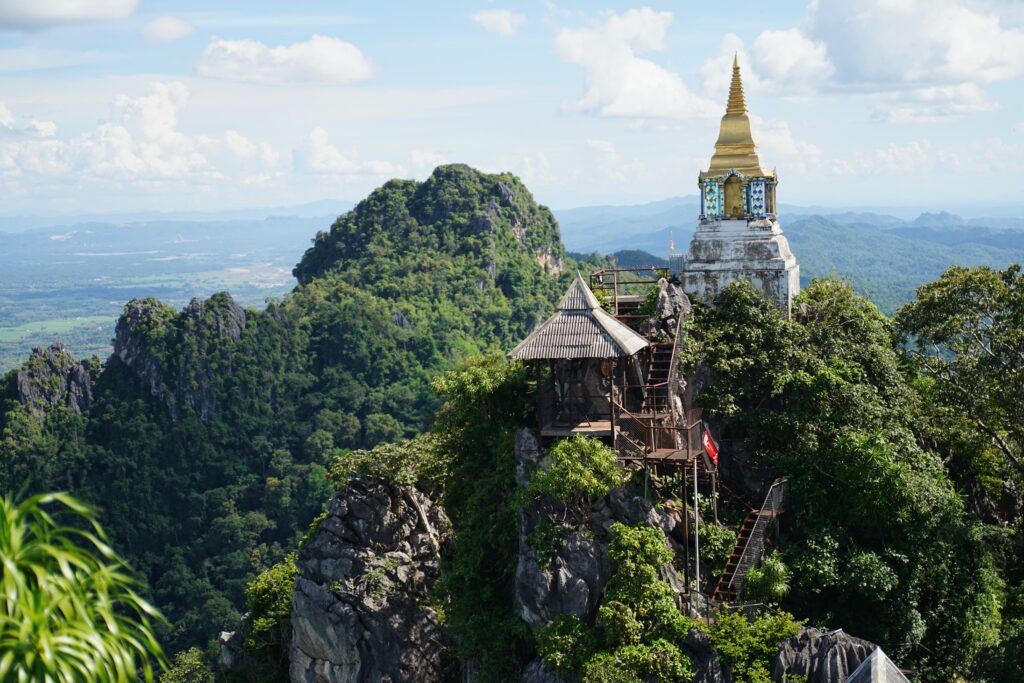
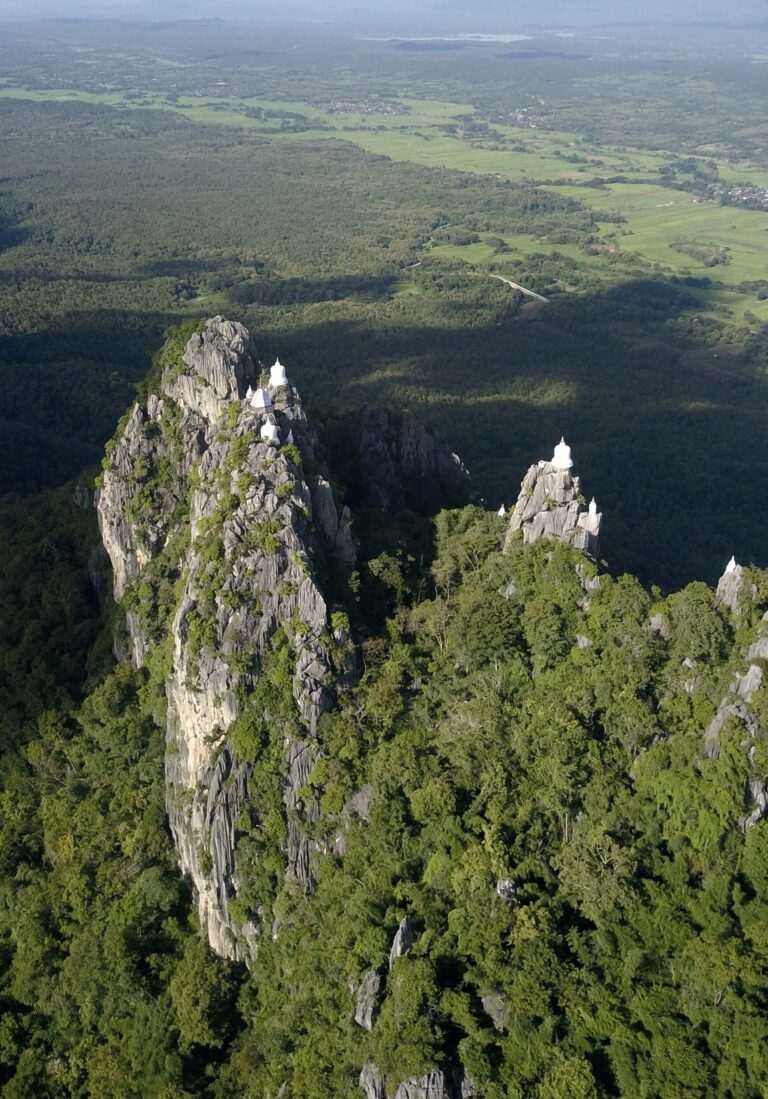
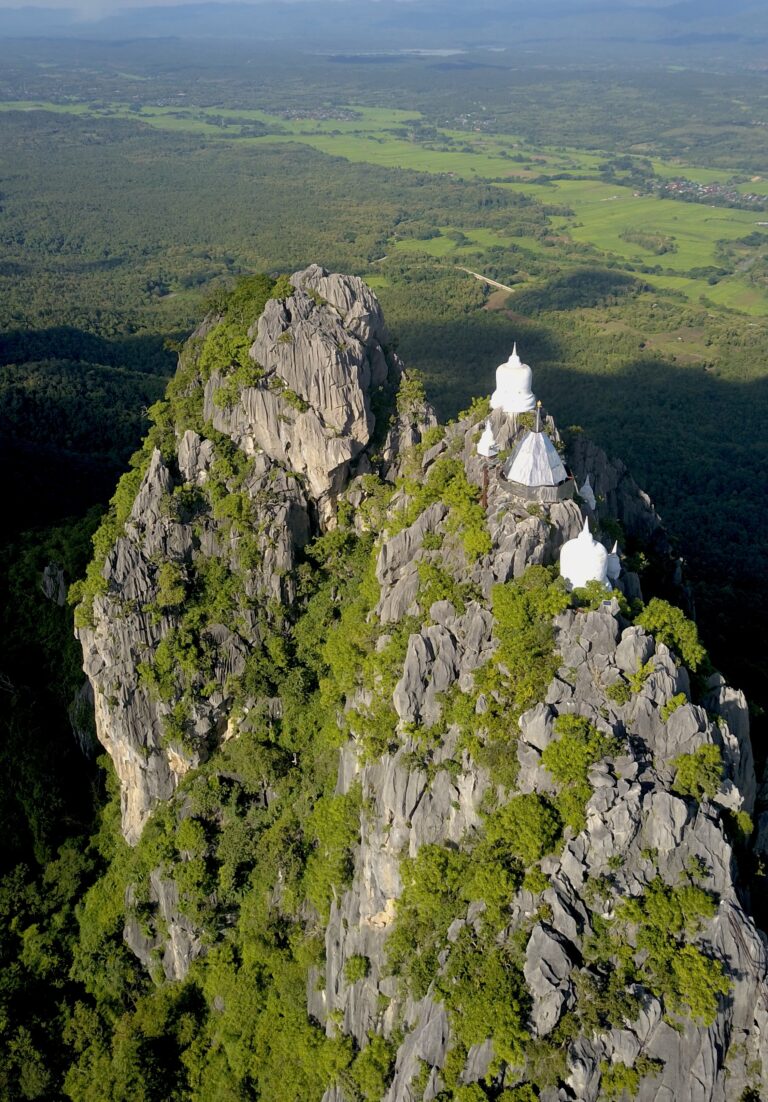
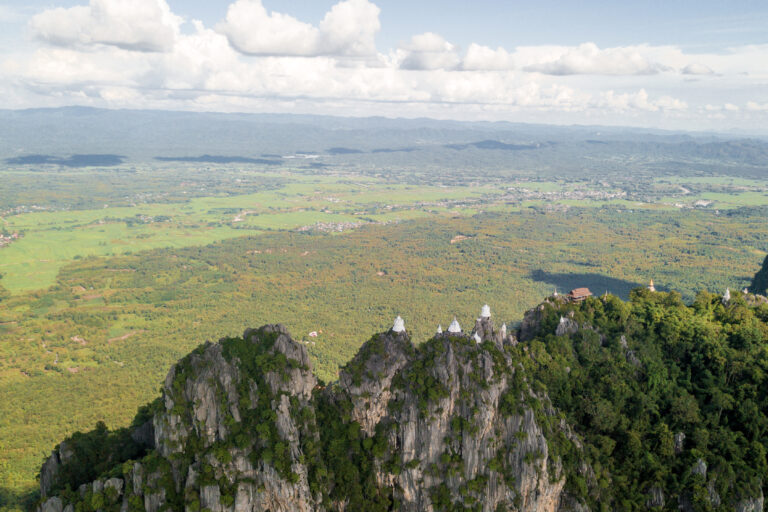
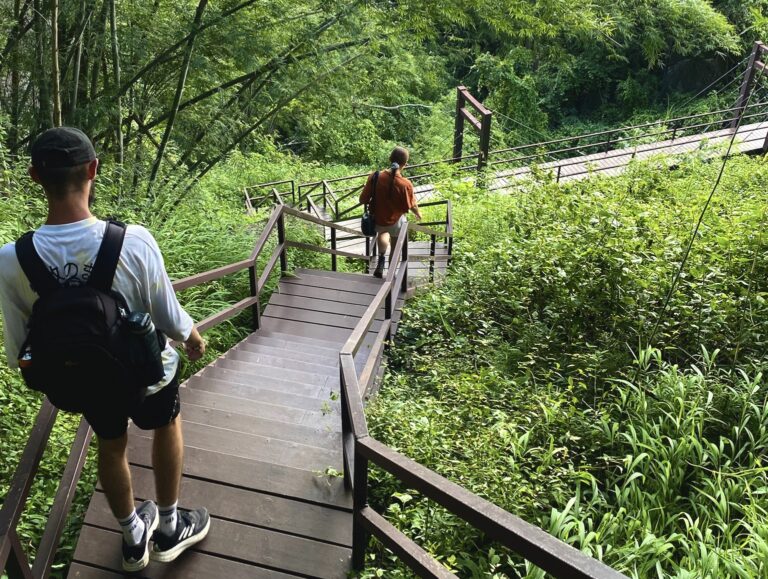
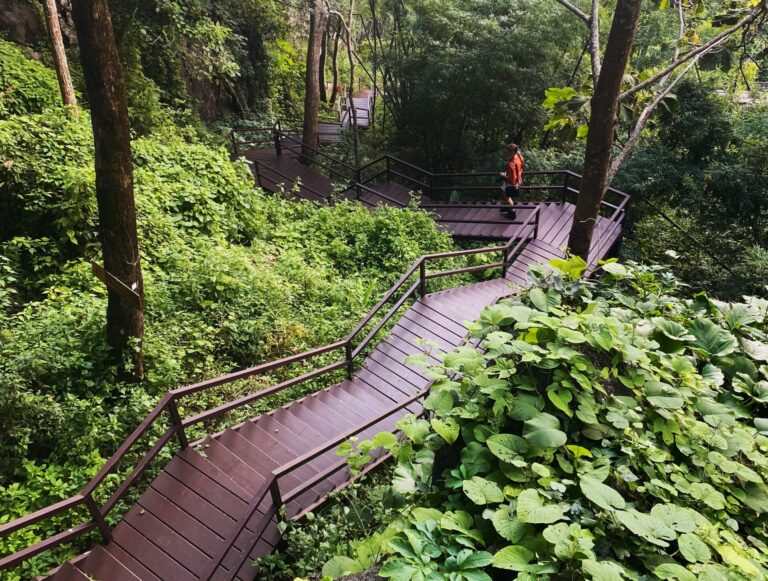
When I visited Wat Chalermprakiat in late August 2022 with two friends, the three of us shared the entire mountain with just 4 other people and even though it was the wet season, the weather was unbelievably good!
This experience is one of my fondest memories in northern Thailand because I just love the feeling of having epic places all to myself.
It’s such an atmospheric location that so many people sadly don’t get to see, but for the lucky few of us who do, it’s very special.
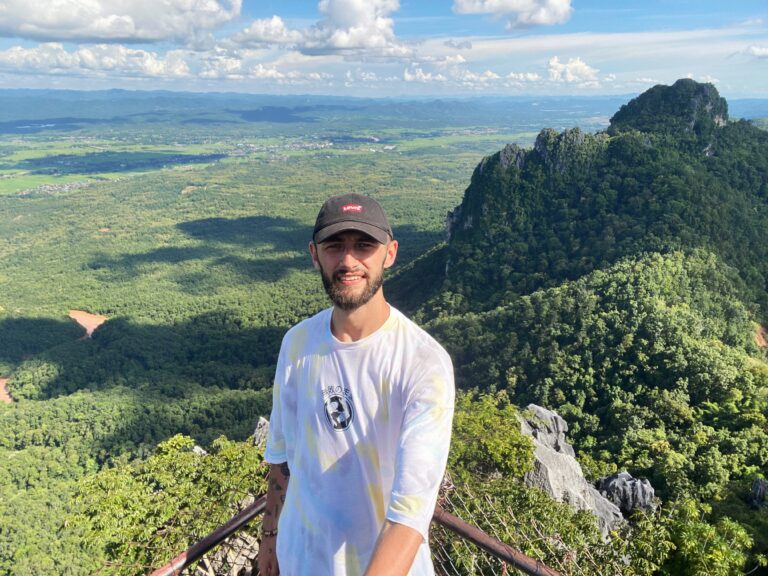
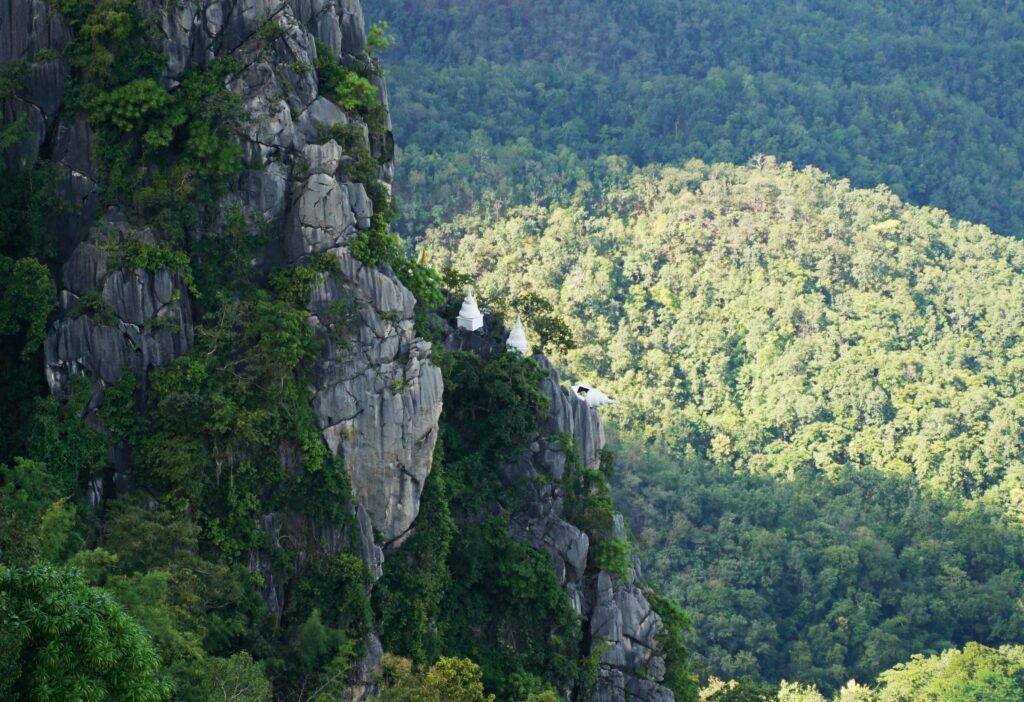
Packing essentials
Depending on the time of year this will change, but there is no need to bring expensive hiking gear at all.
The stairway to the summit is well maintained and, apart from requiring a half-decent cardio system, you don’t need anything specific to visit. You could easily do this in flip flops, although I would never actually recommend that.
This is an active religious site so dress appropriately; no shoulders on display, no short-shorts and remember to remove your shoes at the top. There isn’t an option to rent items like sarongs here, so come prepared.
Don’t forget to bring plenty of water and some warm clothing if you’re going in the cool season, as it can get quite chilly at the summit!
Best tours in northern Thailand

Thank you for reading this travel guide – I hope you found it helpful! Feel free to leave a comment below if you have any questions and I’ll get back to you as soon as possible
Happy travelling!
HELPFUL RESOURCES FOR PLANNING YOUR TRIP
Accommodation: Booking.com, Hostelworld
Tours: GetYourGuide, Viator, Klook, TripAdvisor
Transport: 12Go, Omio, Trip.com, Rome2Rio
WHO IN THE WORLD IS JAMES?
Click below to learn more about my story, including 5 random facts about me, some travel FAQ’s and my entire travel history.
Related posts:
- The Perfect Doi Inthanon Day Trip Itinerary from Chiang Mai
- Taking a 4 Week TEFL Course in Chiang Mai (Honest Review)
- Phi Phi Islands Day Trip from Phuket (Maya Bay Visitor’s Guide)
- Ultimate Pai Travel Guide & 11 Adventurous Things to Do
- 17 Awesome Things to do in Chiang Rai, Thailand – Ultimate Travel Guide
- Complete Chiang Mai Travel Guide & Best Things To Do

